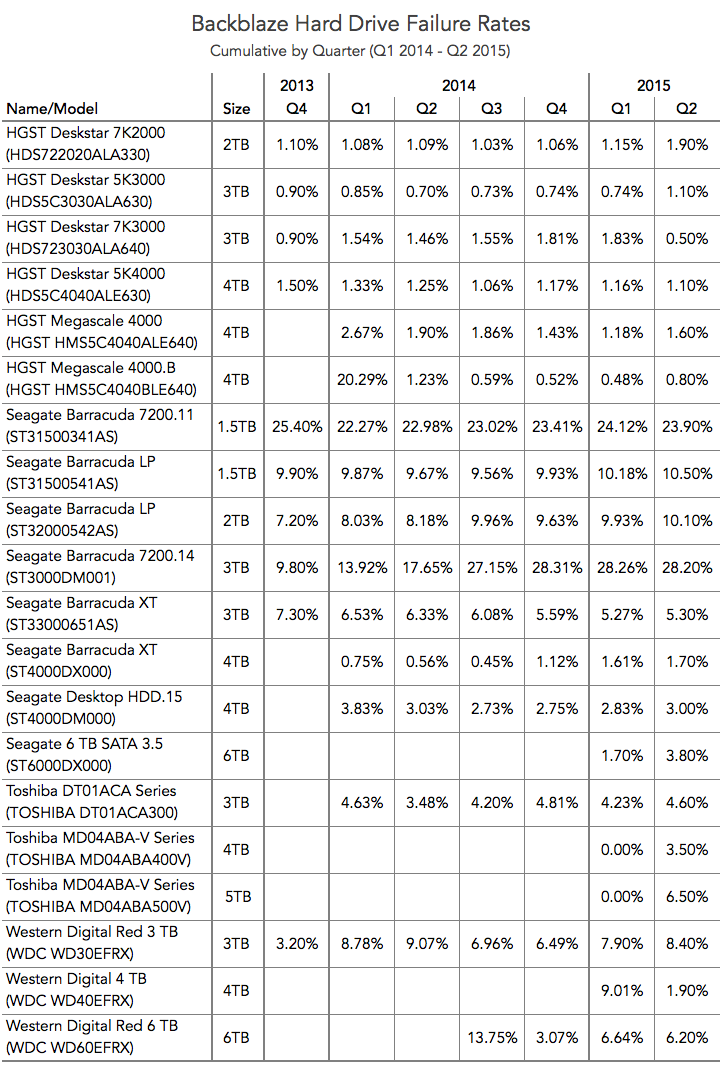I have the following setup built in January of this year:
Fx8320
Asus Crosshair V Formula Z
32GB ECC RAM
5x Seagate 4tb NAS drives
1x Seagate 4tb DM drive pulled from ext case
4x Seagate 500GB 7200.11 drives
Fractal Define R4
Plenty of airflow, room has dedicated A/C
Corsair Cx750m
APC NS1250 UPS
I have now had 3 of the 5 4TB NAS drives report pending sectors and fail self tests. 2 have been replaced by Seagate under warranty and the third had been pulled to RMA tomorrow. Is there anything I could be doing wrong or have setup incorrectly? None of the drives are reporting high temps. I have the box set to do short tests and long tests every 3 days, and the pool is scrubbed every 14th and 29th of the month.
I guess next question is whether Pending/offline uncorrectable sectors are enough to query about. It was only 8 (logical, one physical) sectors in the two most recent failures. The first drive that failed reached 32 within a few days but never failed a short or long test. The most recent drive actually started giving warnings a few months ago but after a reboot and a scrub it returned to 0 for all counts so I didn't RMA. Then yesterday it warns again and failed a long test this morning.
I emailed seagate when I did the second RMA and they said they will gladly swap it if I send them a smartctl output. Haven't had a problem with the RMA yet but I am getting pretty annoyed by the shipping costs and obviously worried that something is causing these errors besides bad drives. A 50% failure rate is nuts.
Fx8320
Asus Crosshair V Formula Z
32GB ECC RAM
5x Seagate 4tb NAS drives
1x Seagate 4tb DM drive pulled from ext case
4x Seagate 500GB 7200.11 drives
Fractal Define R4
Plenty of airflow, room has dedicated A/C
Corsair Cx750m
APC NS1250 UPS
I have now had 3 of the 5 4TB NAS drives report pending sectors and fail self tests. 2 have been replaced by Seagate under warranty and the third had been pulled to RMA tomorrow. Is there anything I could be doing wrong or have setup incorrectly? None of the drives are reporting high temps. I have the box set to do short tests and long tests every 3 days, and the pool is scrubbed every 14th and 29th of the month.
I guess next question is whether Pending/offline uncorrectable sectors are enough to query about. It was only 8 (logical, one physical) sectors in the two most recent failures. The first drive that failed reached 32 within a few days but never failed a short or long test. The most recent drive actually started giving warnings a few months ago but after a reboot and a scrub it returned to 0 for all counts so I didn't RMA. Then yesterday it warns again and failed a long test this morning.
I emailed seagate when I did the second RMA and they said they will gladly swap it if I send them a smartctl output. Haven't had a problem with the RMA yet but I am getting pretty annoyed by the shipping costs and obviously worried that something is causing these errors besides bad drives. A 50% failure rate is nuts.
![[H]ard|Forum](/styles/hardforum/xenforo/logo_dark.png)
